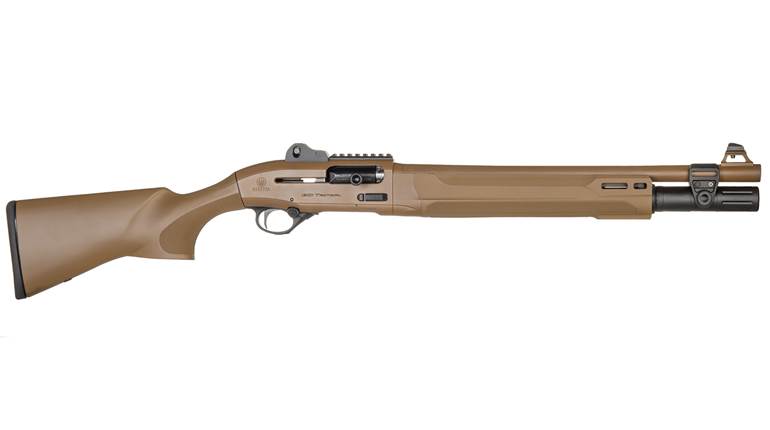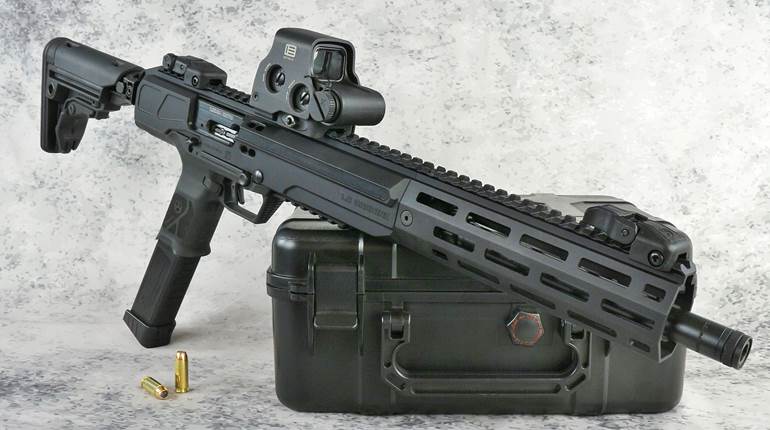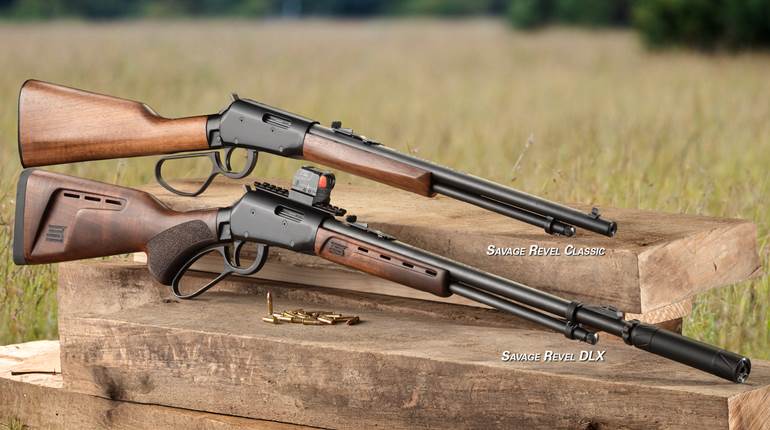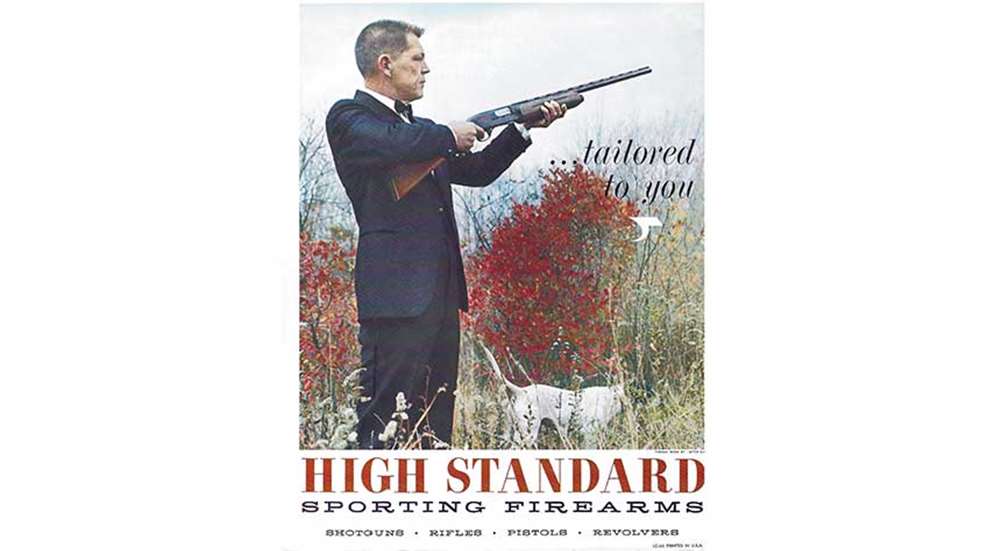
In the long run, a handful of manufacturers persist in their dominance. It's a situation that is particularly true in the case of the handgun makers. For many years, the competition pitted the revolvers of Colt firearms against those of Smith & Wesson. Bill Ruger came along after WWII, started small and got big fast. This was also the era of imports—a great assortment of pistols from all over the world, but mostly from Europe.
In short, we have enjoyed a wide range of types and makers. The demand is high, but some have nonetheless vanished from the pages of the latest gun magazine. Sometimes it's product issues, but more often it is a question of management or finances. Unhappily, some very nice guns are therefore gone—but not forgotten.
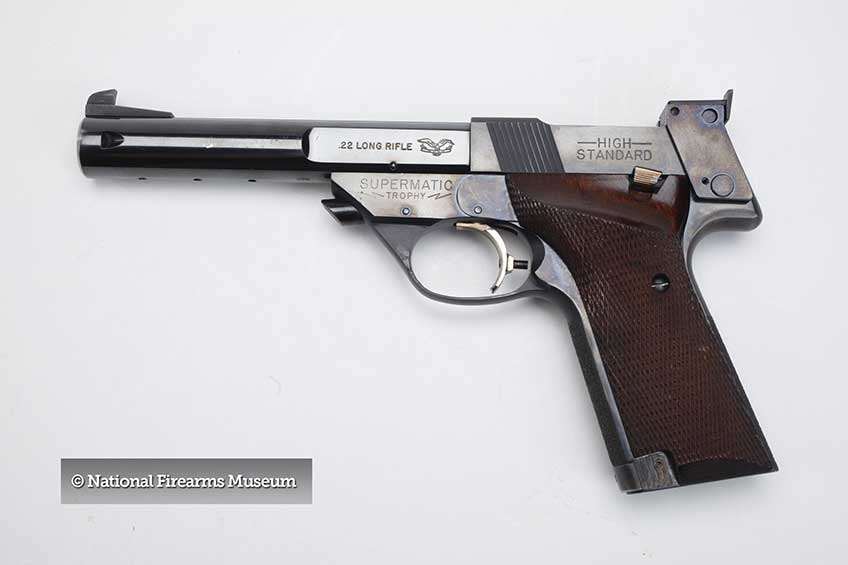
So it is with guns of High Standard, a Gun Valley firm that made a variety of different handguns. At times, it appeared that High Standard was trying for what several modern companies are presently doing—aiming at a niche in a multi-faceted market.
Founded in the mid-1930s when Gus Swebelius bought the assets of a small arms company in Hartford, Conn., High Standard began production of a basic .22 semi-automatic pistol. Styled much like the very popular Woodsman, the High Standard was a lower-priced but nonetheless viable option to the revered Colt product.
It was well-established by the time that WWII began in December 1941, and the armed services bought tens of thousands of them for basic handgun training. It was also in the latter months of the war that the company undertook another project—a suppressed version of the basic .22.
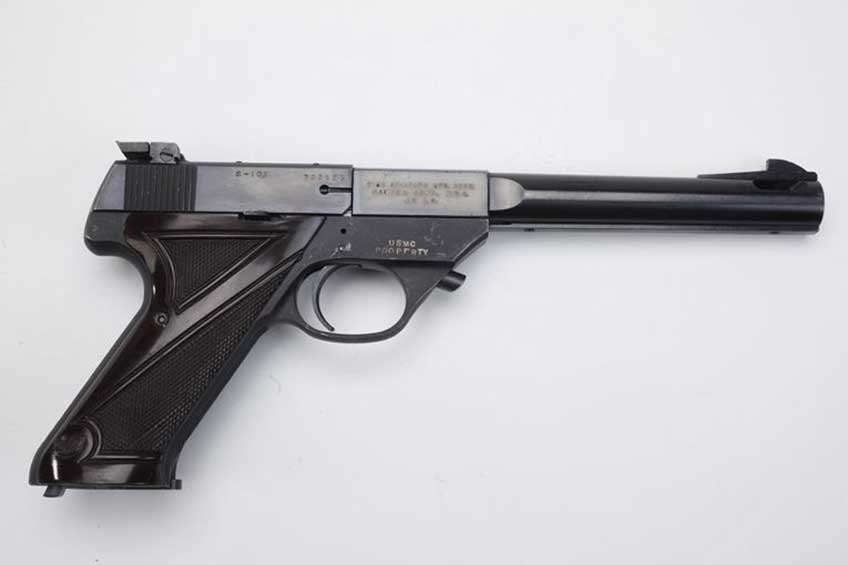
They did do at the behest of OSS for certain activities that were best kept quiet. I believe that it was one of these semi-autos that rode with Gary Powers on his historic flight over Russia in 1960. High Standard's war service also included the initial work on a .380 semi-auto for the government. The gun went unheeded when the conflict came to a halt in '45. Some of the .380 blowbacks were offered on the civilian market in the late 1940s but were not sufficiently popular to stay in production.
In the fiercely competitive post-war handgun market, High Standard offered several guns that were advanced and durable designs. For a time, the firm had legendary designer Harry Sefreid on their staff. This was a man who designed winning guns from one end of Gun Valley to the other.
One of his gems was the Sentinel, a compact .22 revolver that came in several finishes, barrel lengths and variations. With an aluminum frame—but steel barrel and cylinder—this inexpensive DA/SA wheelgun drew praise for its superior ergonomics and performance. Informed wheelgunners from Chic Gaylord of the 1960s to today's internet “The Revolver Guy” have positively endorsed this almost-forgotten little rimfire.
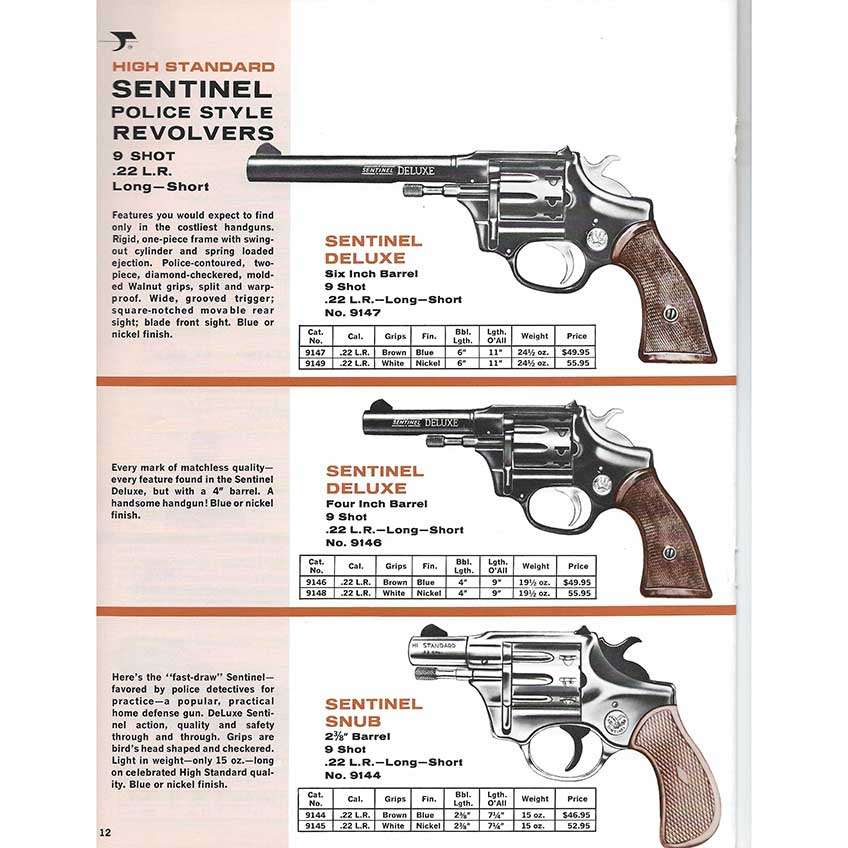
And speaking of rimfires, High Standard also offered (1962 to 1984) a unique two-shot derringer that was eminently successful. The Double Derringer was an over-and-under two-barrel design that came in both .22 Long Rifle and .22 Winchester Magnum Rimfire. It had an enclosed hammer, DAO lockwork and a partial trigger guard that protected the trigger from accidental firing.
The Fitz Special trigger guard is unquestionably quicker to get to, but speed is not necessarily a virtue in an outdoorsman's utility gun. If a gun was intended for the fisherman's vest—and this one was—the public never heard of it. They bought the little twin banger and slipped it into pocket (or purse).
Even guys who knew that such small bores and low power should not be relied upon in this role carried them anyway. I recall a long ago afternoon of trying to figure out what the close-range zero of one of them really was. There were two—one for each barrel. I never really got this completely resolved, but I was hard after a compact pistol that could pop a desert rattlesnake in the head.
But I have a definite image pop into my mind when I hear “High Standard.” It's always some variation of the original .22-cal. automatic pistol. From pre-war times to the WWII days of beginner's basics to Olympic gold medals, High Standards got it done.
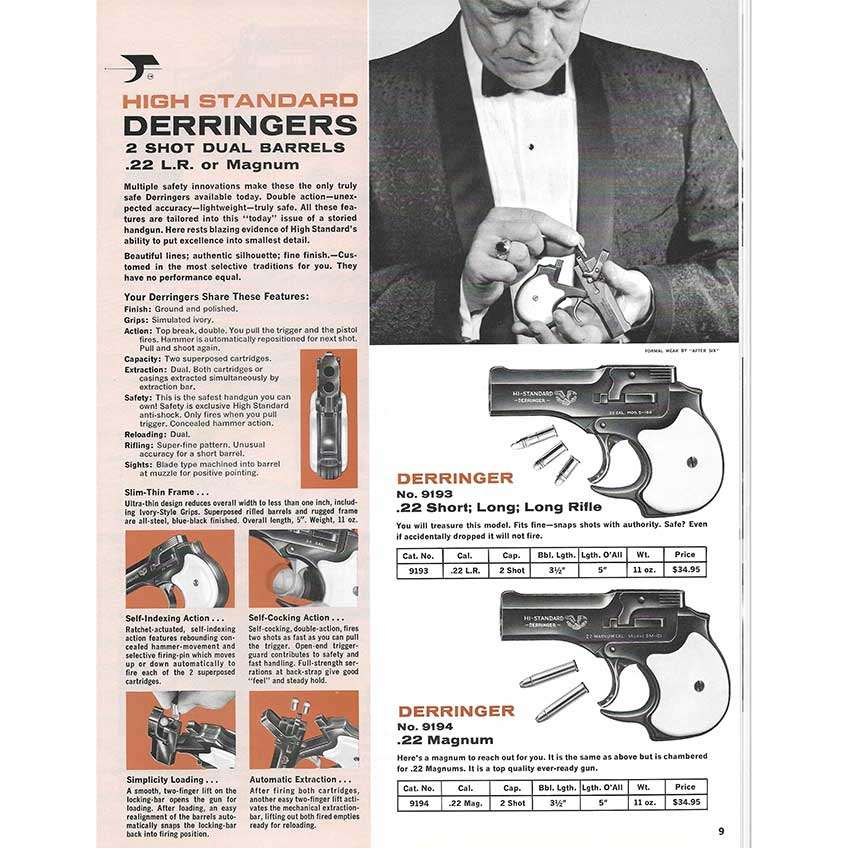
Using the same basic foundation, High Standard crafted everything from Montgomery Ward low end plinkers to high class competition semi-autos. When outdoor pistol was the game to play, a full third of the rounds for record were .22s. A guy on a budget could use one of the many High Standard models and be competitive. They were fine guns, and they got finer when the maker announced an improved frame profile.
Bullseye shooters had to shoot a third of their their course with .45s and most chose to use so-called “accurized” 1911s. Another third was “any center fire” handgun. This was where the revolver lingered longest, but a strong majority of shooters chose to use their 1911s for this stage, too.
The remaining third was .22 and it should be obvious that a gun in this caliber that was shaped like a 1911 would be appealing to a great many shooters. The abruptly angled grip was commonly used on the early High Standards, as well as Colts and Brownings.
Supposedly, the angled grip made the gun point better. Actually, the angled grip was there because it facilitated feeding in the magazine. When S&W made its match .22, it had the 1911 grip contour. In the face of all this, High Standard responded with its own 1911-shaped receiver.
I believe the Military Model .22s from High standard were the best guns that ever came out of this great little gun company. Solidly built and sensibly priced, the guns were the answer to a great many shooting needs. The company name said it all.













